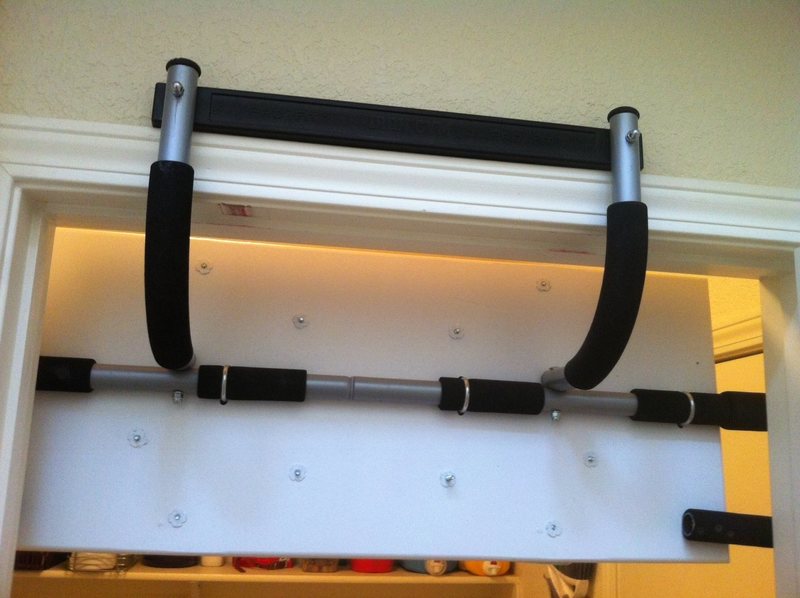Homemade Blank Slate, Part II
|
|
In this other thread I posted a picture of a fingerboard that I mounted to an old pull-up bar I had laying around my house. Not satisfied with the quality, I decided to re-do it and thought I'd post up the steps. The steps are a bit terse, you'll have to fill in the nitty gritty as you go.
Tools needed:
Parts needed for homemade fingerboard mount Step 1 Cut the 3/4" ply wood to the appropriate size. I planned on mounting two fingerboards, so I made it a little on the big side. Pre-drill holes for fingerboards/holds and install t-nuts. Step 2 Cut off the horizontal extensions flush with the cross bar that bridges between the sides of the door. The arrows in the first photo indicate where I had already cut off the aforementioned bars. Save the small bars you cut off, you'll need them later. Step 3 Determine where you will mount the ply wood on the pull up bar, drill holes for u-bolts, mount the ply wood to bar with u-bolts to check for fit. Step 4 Take it all down, router, sand, and paint the ply wood. Step 5 Drill and screw the small bars you cut off earlier to the bottom of the back side of the ply wood. This helps stabilize the board in the door frame (otherwise it sways and rotates too much). The next photo shows the cut off bars re-mounted to the backside of the board. Step 6 Put it all back together and enjoy. More photos: Backside showing bottom stabilizer bars installed. Backside of board Finished product. I had not yet installed the bottom stabilizer bars. Finished board Advantages over store bought systems:
|
|
|
Hi Tim, |
|
|
DrProc, the "stabilizer" bar is shown in the pic of the backside. I just screwed on the excess I had previously cut off. Its only purpose is to prevent the board from rotating under the door header when weighted. You could use anything to serve the purpose, I just used the scrap laying around. |
|
|
Very nice approach, building on the long-refined design of commercial pull-up bar. And very nicely executed. |
|
|
Nice! |
|
|
The black foam on the bars can eventually leave marks on white doorframes, consider wrapping them with something to prevent this. |
|
|
Yes that's what happened to me to the on the black foam pads marked up my doorways and kind of stuck to the white paint and pulled it off. |
|
|
That board rocks. |

 Continue with onX Maps
Continue with onX Maps Continue with Facebook
Continue with Facebook




















